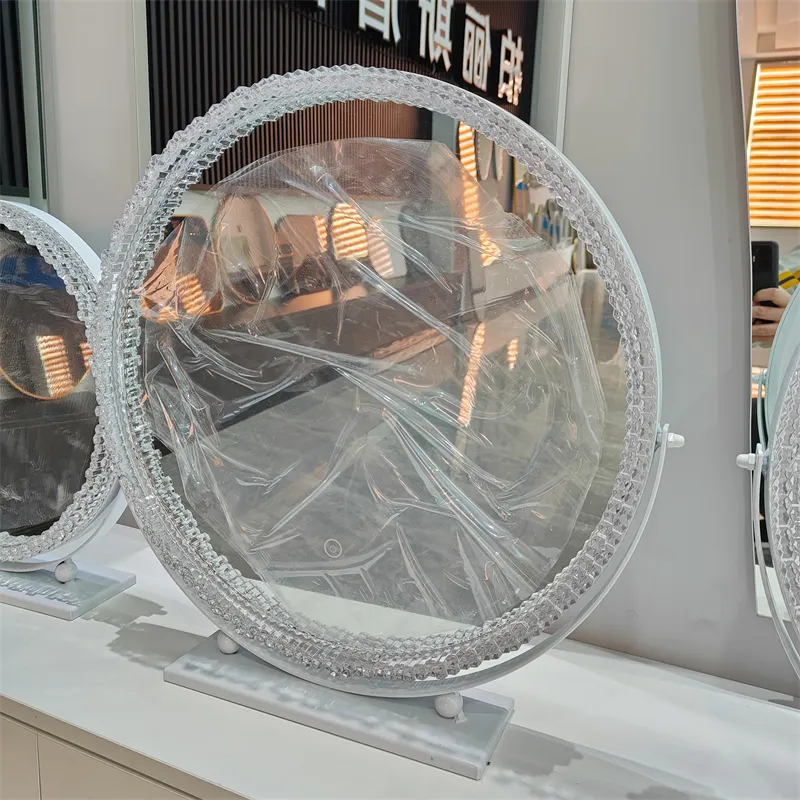Nov . 12, 2024 09:15 Back to list
reflective glass colors
Reflective Glass Colors Transforming Spaces with Light and Hue
In the modern architectural landscape, the aesthetic appeal of buildings extends beyond mere shape and structure; it encompasses the interplay of materials, light, and color. One innovation that has gained traction in recent years is reflective glass, a versatile medium that not only enhances visual dimensions but also serves functional purposes. Reflective glass comes in various colors, allowing architects and designers to craft environments that are as striking as they are practical. This article delves into the world of reflective glass colors, exploring their impact on design, functionality, and our perceptions of space.
Reflective glass is characterized by a metallic coating that reflects a significant amount of light while simultaneously allowing some to pass through. This unique combination yields a stunning visual effect, often appearing to change color throughout the day depending on the angle of the sunlight and the viewer's position. As a result, reflective glass has gained popularity in commercial and residential buildings, where it can create dynamic interactions between exterior and interior spaces.
Color Spectrum and Architectural Expression
The color of reflective glass can range from subtle hues to vibrant tones, providing architects with a palette to express their creative visions. Common colors include bronze, blue, green, grey, and even more artistic options like purple or red. Each color creates a different atmosphere and can evoke various emotions — for instance, blue reflective glass might instill a sense of calmness, reminiscent of the sky or water, while bronze can impart warmth and richness to a structure.
Moreover, reflective glass colors can be selectively applied to enhance the environmental context of a building
. In urban areas, grey or blue shades might help a building blend into the skyline, while lush green reflective glass can echo nearby natural landscapes, harmonizing architecture with its surroundings. The decision on which color to use ultimately depends on the desired outcome and the narrative the architect wishes to convey through the building design.Functional Benefits
reflective glass colors

Beyond aesthetics, reflective glass serves practical functions that make it a sought-after material in construction. One of its key attributes is energy efficiency. Reflective glass helps to minimize solar heat gain, reducing the need for air conditioning in warmer climates. This capability not only supports sustainable building practices but also contributes to the overall comfort of the occupants. For instance, buildings adorned with reflective glass can maintain cooler interior temperatures, lowering energy costs and conserving electricity — a vital consideration in an era of increasing environmental consciousness.
Moreover, the reflective qualities of this glass can enhance privacy without sacrificing natural light. Whether it’s for office spaces or residential homes, reflective glass can obscure the view from the outside while allowing those inside to enjoy unobstructed views of the exterior. This dual advantage is particularly important in urban environments where privacy can be a significant concern.
Psychological Impact and Perception
Interestingly, the color of reflective glass can also affect our psychological experience of a space. Colors can influence our moods and perceptions; for example, reflective glass that showcases cooler colors like blue or green might foster tranquility, making spaces feel more open and airy. In contrast, warmer colors like bronze or amber can generate a sense of intimacy and coziness.
The impact of color extends to how we perceive the size and functionality of a space. Lighter reflective glass shades can create an illusion of expansiveness, making smaller areas feel larger, while darker shades may evoke a sense of enclosure and warmth. By understanding these psychological effects, designers can manipulate color choice to enhance the functionality and aesthetic appeal of a space.
Conclusion
Reflective glass colors represent a remarkable blend of art and science in architectural design. They provide an array of aesthetic choices while contributing to energy efficiency and privacy. The thoughtful selection of colors can dramatically alter our experience of a space, conveying emotions and enhancing perceptions. As architects and designers continue to explore the possibilities of reflective glass, its role in shaping our built environment will undoubtedly evolve, pushing the boundaries of creativity and functionality in architecture. Whether in urban skyscrapers or residential havens, reflective glass colors are transforming the way we see and inhabit our surroundings.
-
Safety and Style with Premium Laminated Glass Solutions
NewsJun.24,2025
-
Reinvents Security with Premium Wired Glass
NewsJun.24,2025
-
Premium Float Glass Line for Modern Architecture
NewsJun.24,2025
-
Low Emissivity Glass for Energy-Efficient Architecture
NewsJun.24,2025
-
High-Performance Insulated Glass Solutions for Modern Architecture
NewsJun.24,2025
-
Elevates Interior Style with Premium Silver Mirror
NewsJun.24,2025
Related PRODUCTS














